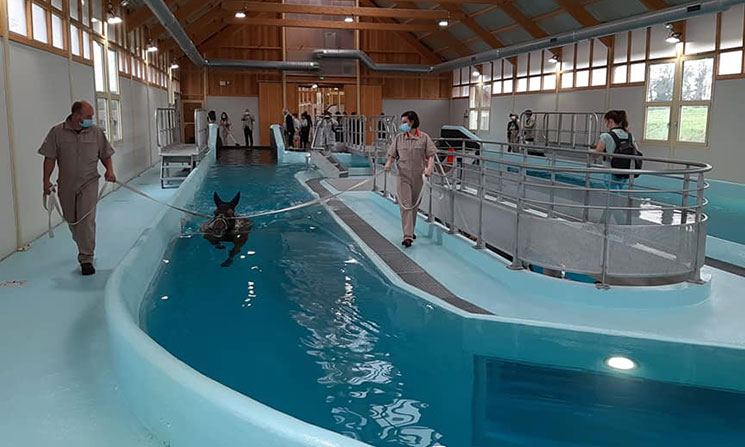The French NRA (National Research Agency) supports CAPT-ESE, a research project dedicated to the prevention and management of locomotor pathologies by optimizing training and sportive rehabilitation of equine athletes. This project involves the EnvA-Cirale, the Université Claude Bernard Lyon 1, the Université of Technologie de Compiègne, LIA EVASYM and LIM Group, that will work together on the training, rehabilitation and locomotion of horses.
Why this project?
Locomotor disorders (tendonitis, arthropathies) are the main disorders affecting and limiting performances. It is also the first cause of temporary or final interruption of a horse’s career.
What are the work leads?
Management and individualized adjustment of training through the use of sensors
The objective is to quantify the horse’s workload in an objective manner thanks to numerous data (limb movement, back mobility, heart rate, rider’s position). A longitudinal follow-up of the locomotion will also be implemented. The goal? Early detection of an anomaly in order to prevent a pathology.
Experimentation in an aquatic environment
Training the horse in an aquatic environment aims to reduce some physiological constraints on joints and tendons compared to classical work. The goal is to quantify the effects of this pool work to adapt the training of our horses.
Horse-rider interaction
The saddle is the link between a rider and his horse. Studying and quantifying this interaction is an essential axis of this project. We have already been working on these subjects thanks to our research project Saddle in Motion® and our product range CWD iSPORT. From now on, we are also studying the effects of training, working conditions and rider technique on the horse’s locomotion and health.
Thinking about tomorrow’s way of riding…
Once again, LIM Group stands out by being part of an international research project. Our goal is to continue to be an actor of the well-being and health of the equine athlete. To do so, our role is to bring new solutions to riders – but also veterinarians –, to allow them to reach their objectives on a daily basis. “The important thing is not the goal, but the path”; for us, the path to performance is the respect of horses’ physical integrity.
Crédit Eric Biernacki region Norman


